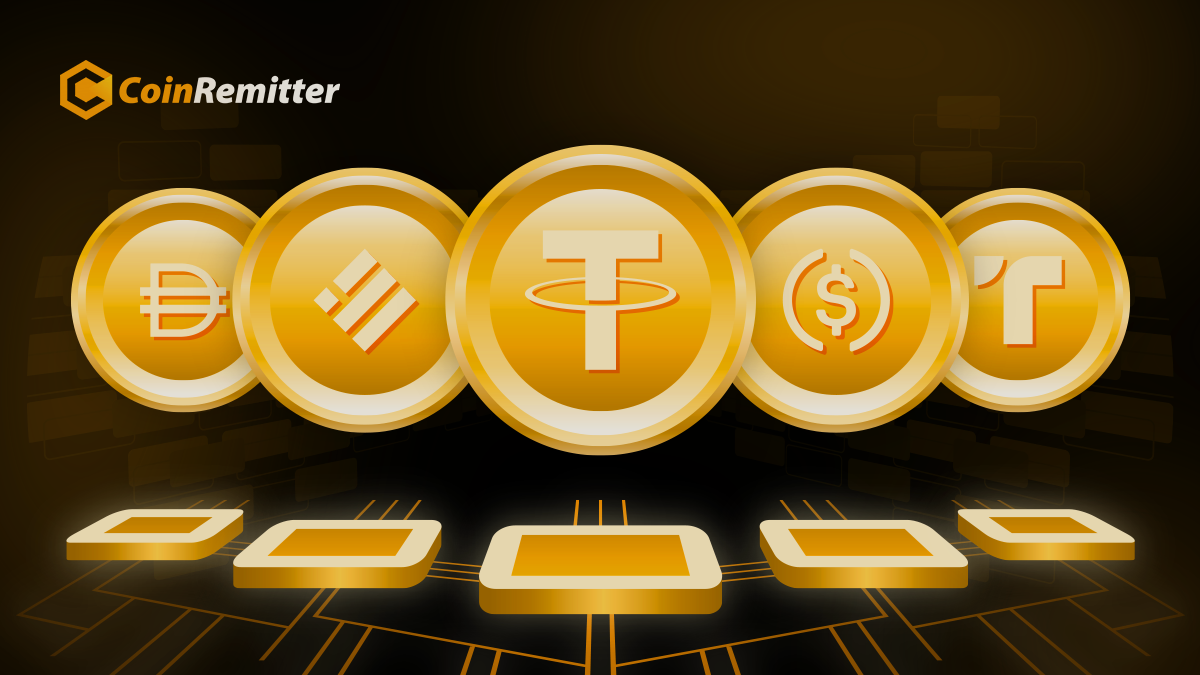There are about 9000 cryptocurrencies in the world, and over 150 of them are stablecoins, which acquire 0.08% of the cryptocurrency market. This number clearly shows the potential of stablecoins. Whenever we discuss stablecoins, we all think about USDT. We can say that Tether in stablecoins is as popular as Bitcoin in overall cryptocurrencies.
But stablecoins aren’t just about Tether. There are three types of stablecoins:
Fiat-backed stablecoins: Such stablecoins maintain the value of a specific fiat currency. For example, USDT (Tether) maintains the value equivalent to 1.00 USD.
Crypto-backed stablecoins: Such stablecoins use other cryptocurrencies as collateral to maintain their value peg. For example, DAI is a stablecoin, which is backed by Ethereum.
Algorithmic stablecoins: Such stablecoins are pegged to fiat currencies, without being backed by any centralized authority.
The role of stablecoins in 2024 can be important when talking about crypto payments. However, these are just predictions and we expect every prediction to go ahead. Let’s see what can be expected from stablecoins in crypto payments in 2024:
- Increased adoption among investors
- Mainstream recognition
- Diversification and innovation
- Higher market capitalization
- Wider acceptance
Increased adoption among investors: 30% of investors own stablecoins currently. Out of them, over 49% own Tether. Most investors are said to lean towards stablecoins just because of their involatile nature. In 2024, we can expect stablecoins to overcome regulatory uncertainty. Also, some issues related to the peg stability. Apart from that, reducing cybersecurity threats and increasing education and awareness about stablecoins may increase the adoption of stablecoins by 30-50% by the end of 2024. This increased adoption can also improve the utilization of stablecoins in the form of crypto payments or investing.
Mainstream Recognition: The adoption of stablecoins in online payments, settlements, and other financial services may boost the mainstream recognition of stablecoins. This has already started as some traditional finance institutes provide seamless fiat-to-crypto conversions. For online payments, most crypto payment gateways provide services for accepting Tether and other stablecoins. However, improvements in volatility, peg stability, transparency, and reserve banking can propose over 50% more reputed industries believing in stablecoins. This rise can be witnessed in industries accepting crypto payments as well.
Diversification and innovation: We can expect stablecoins to be backed by more assets like some other reputed fiat currencies, expensive metals like gold and platinum, and commodities like oil and agricultural products. Issuing Central bank digital currencies (CBDCs) may reshape the stablecoin landscape. Such diversity can attract a wider range of merchants to choose crypto payments, especially in stablecoins. Innovations can introduce us to more than 10 new use cases and further legitimize the crypto payment method among individuals.
Higher market capitalization: We can expect approximately a 16% rise in the market capitalization of stablecoins by the end of 2024. Such a rise can be caused by increased institutional adoption. We may witness the daily stablecoin transaction volume of USD 100 Billion by the end of 2024. If the institutional adoption keeps rising, we can see a 1-5% rise in the number of merchants accepting stablecoin payments regularly.
Wider acceptance: Some global financial bodies are actively discussing and developing regulatory frameworks related to stablecoins. Perfectly defined rules. Also, governments from several countries are trying to provide an easy crypto-to-fiat exchange, especially for stablecoins. Apart from these factors, we can see easy cross-border payments and some technological advancements such as improved scalability and security infrastructure may increase the acceptance of stablecoins as payments by 15-20%.
Conclusion
2024 seems a good year for stablecoins. If the crypto community contributes well to the world of stablecoins, we can expect wider adoption, more diverse options, and more service providers coming forward with exciting services. We can also see some crypto payment gateways prioritizing one of the stablecoins. In conclusion, we can say that stablecoins contain all the advantages of cryptocurrencies and they may add individuals to the ecosystem of crypto payments who are worried about volatility.
[Disclaimer: Stats or expectations might be inaccurate in the future. As these are just predictions based on the current scenario, the author will not be responsible for any variation in the stats.]
